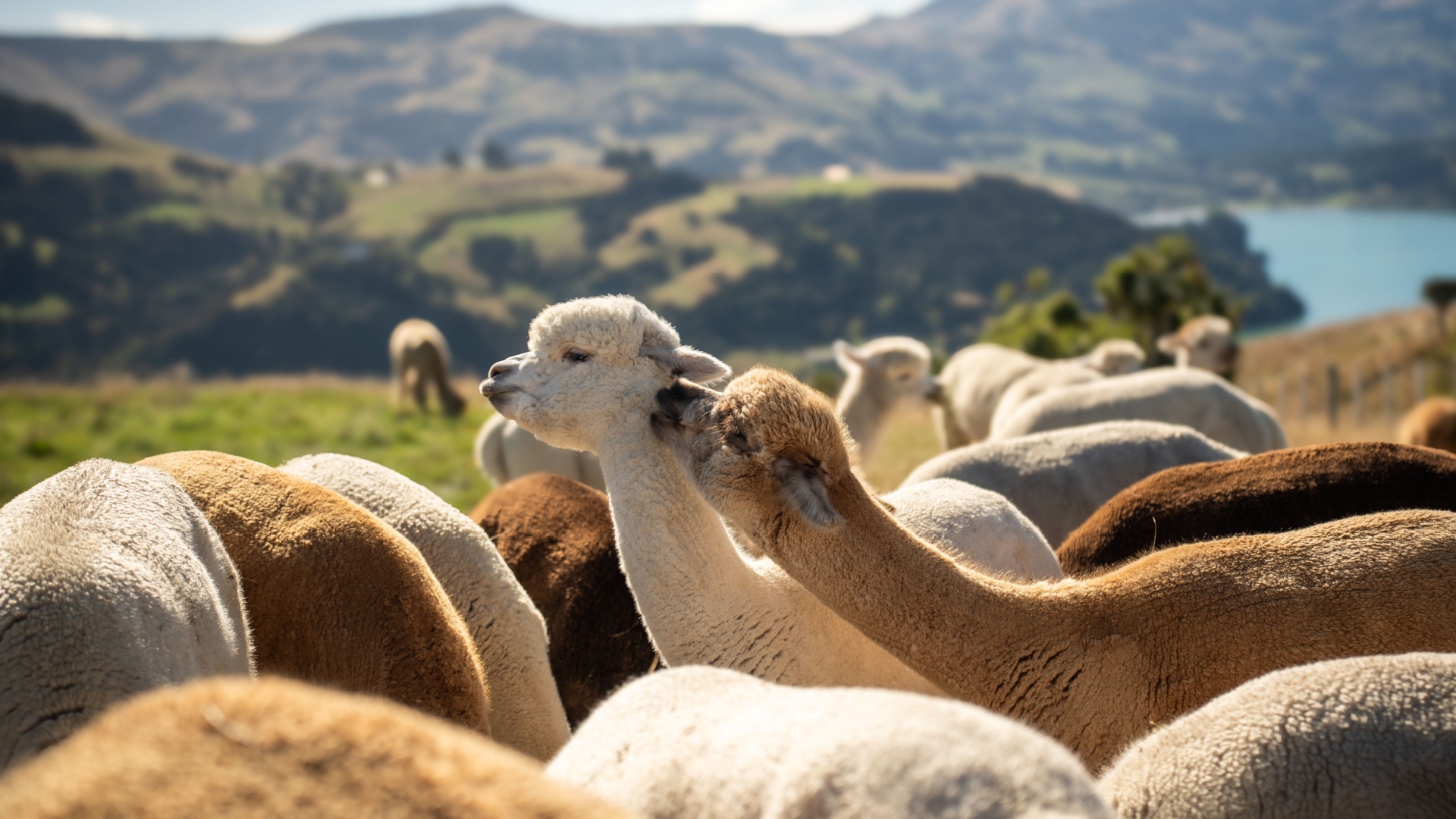Alpacas are some of the most lovable and quirky creatures out there! With their soft, fluffy coats and gentle nature, it’s no wonder they’re a favorite among animal lovers.
But beyond their adorable appearance, alpacas have a lot of interesting traits that might surprise you. From their social behavior to their unique way of communicating, there’s a lot more to these fuzzy friends than meets the eye.
Let’s discover some fun alpaca facts that will make you appreciate these charming animals even more.
1. Alpaca Fleece Luxury
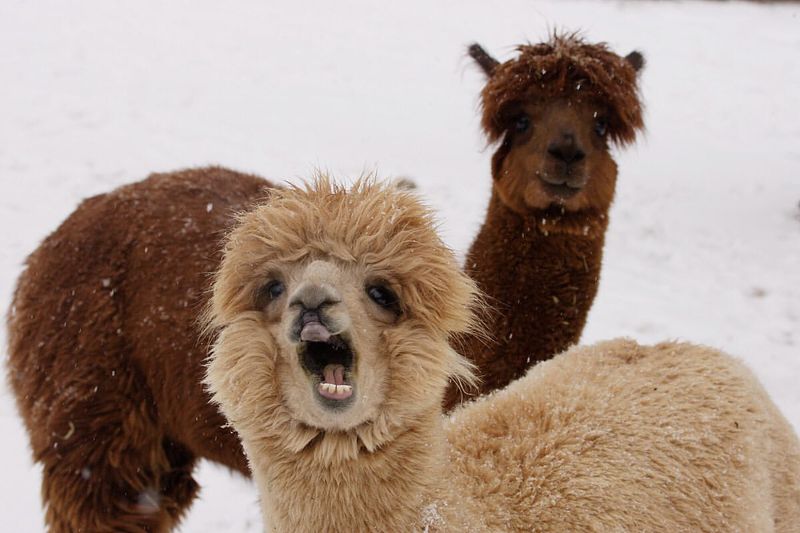
Alpacas are renowned for their fleece, which is often compared to cashmere in terms of softness and warmth. This exquisite fiber is hypoallergenic, making it ideal for people with wool sensitivities. Alpaca fleece is available in 22 natural colors, ranging from white to black, with many shades of brown and gray in between. Breeders often select alpacas for specific fiber qualities, leading to an ever-increasing range of hues and textures.
Each shearing yields between 5 to 10 pounds of fleece, which is light in weight yet incredibly insulating. The fiber’s structure consists of microscopic air pockets, providing excellent thermal comfort without the bulk. Unlike sheep’s wool, alpaca fleece contains no lanolin, making it easier to process and clean. This unique characteristic also gives it a silky, luxurious feel.
Artisans worldwide prize alpaca fleece for its versatility, crafting it into garments, accessories, and home textiles that promise warmth and elegance. The growing popularity of alpaca products supports sustainable and ethical farming practices, benefiting local communities.
2. Social Creatures
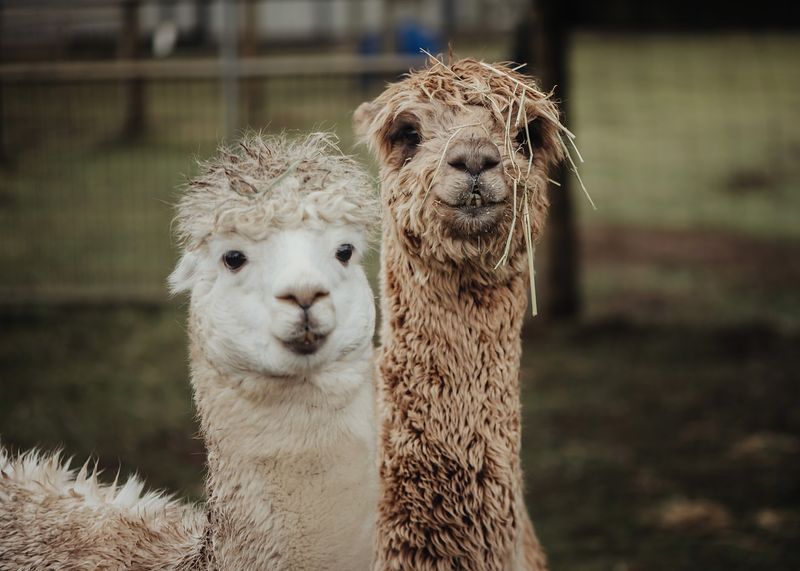
These incredibly social animals thrive in herds where they develop strong bonds with one another. They communicate through a series of gentle hums, clicks, and body language, creating a harmonious living environment. This social nature is essential for their well-being, as alpacas become stressed when isolated from their herd.
The hierarchy within an alpaca herd is established through subtle gestures and postures. Dominant alpacas may take the lead in grazing or moving to new areas, while others follow. Despite having a pecking order, aggression is minimal, with most disputes resolved through non-violent means.
Alpacas often engage in communal activities such as dust bathing and grazing, strengthening their social bonds. Their cooperative behavior extends to shared care of young alpacas, known as crias, where several adults may watch over them while mothers graze.
This communal living structure is a testament to their gentle and cooperative nature, making them ideal livestock for farmers seeking harmonious animal communities.
3. Unique Digestive System
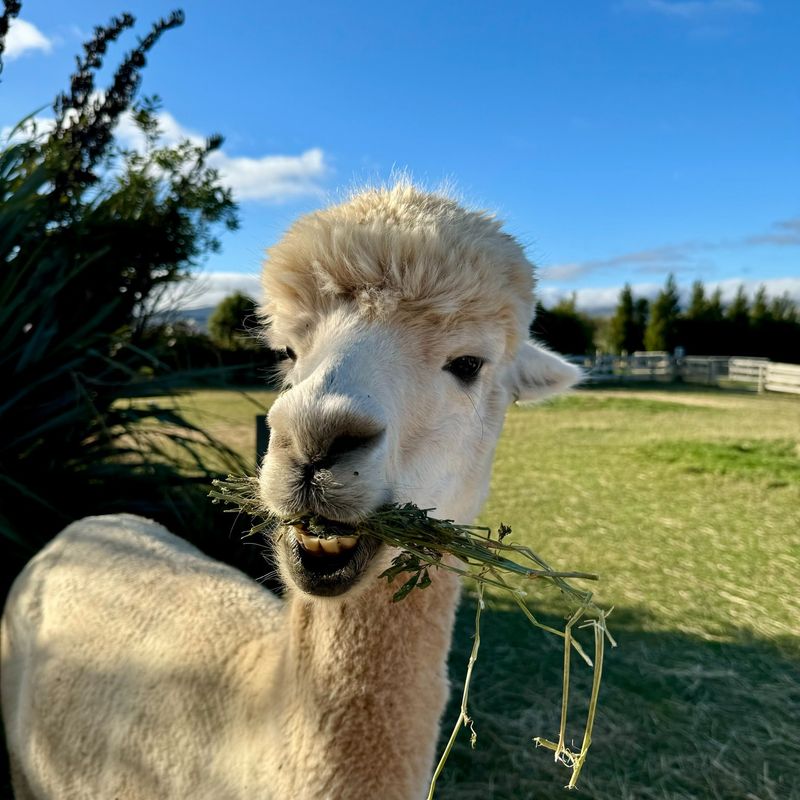
Alpacas possess a unique three-chambered stomach that efficiently processes their fibrous diet. Unlike ruminants, which have four stomach chambers, alpacas have adapted to their Andean environment with a specialized digestive system. This adaptation allows them to extract maximum nutrients from the sparse vegetation found in their native habitat.
The first chamber, the forestomach, initiates the breakdown of tough plant fibers. Microorganisms in this chamber ferment the ingested material, breaking down cellulose into more manageable nutrients. The second chamber further processes the food, continuing the fermentation process.
Finally, the third chamber absorbs the nutrients into the bloodstream. This efficient system enables alpacas to thrive on a diet of grasses, leaves, and hay, minimizing their need for additional supplements. Farmers often appreciate this trait, as it reduces feeding costs and maintains the alpacas’ health.
Understanding this intricate digestive process highlights alpacas’ remarkable adaptation to challenging environments and their suitability as sustainable livestock.
4. Gentle Temperament
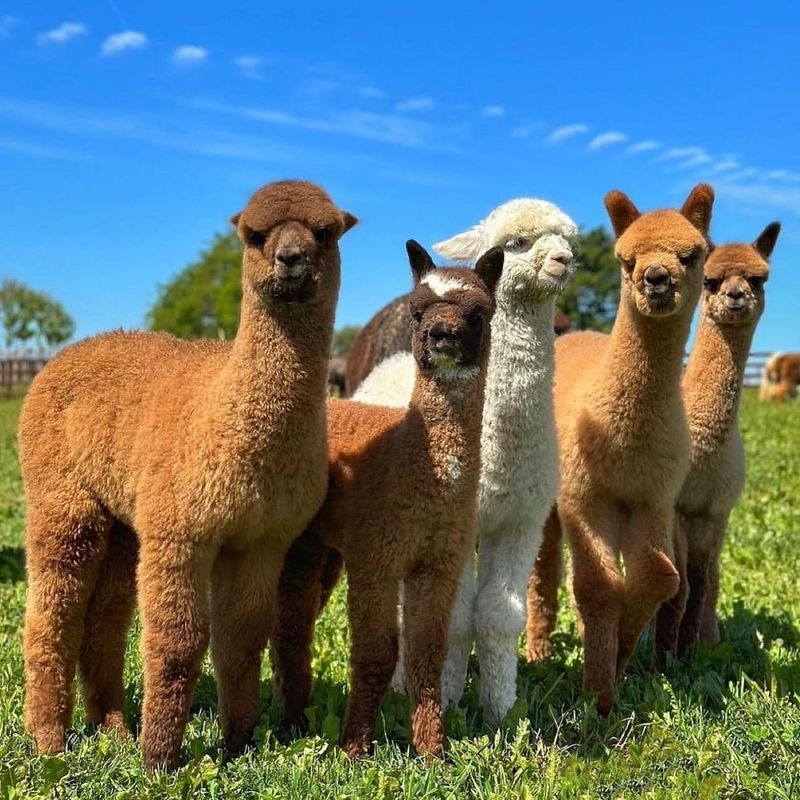
Alpacas are renowned for their gentle and calm demeanor, making them a favorite among both farmers and animal enthusiasts. Unlike their camelid cousins, such as llamas, alpacas are less likely to exhibit aggressive behaviors like spitting. This gentle temperament is especially appealing for families with children or for use in therapeutic settings.
Alpacas’ calm nature allows them to be handled with ease, making routine care tasks such as shearing and health checks more manageable. Their patient disposition also means they can interact with humans in a relaxed manner, often approaching out of curiosity rather than fear.
While each alpaca has its personality, most exhibit a friendly and inquisitive nature. This temperament makes them excellent companions for other livestock, such as sheep and goats, where they often form protective bonds. Their gentle presence has been shown to reduce stress in mixed-species herds, underscoring their role as valuable additions to farms and therapeutic programs alike.
5. Environmental Impact
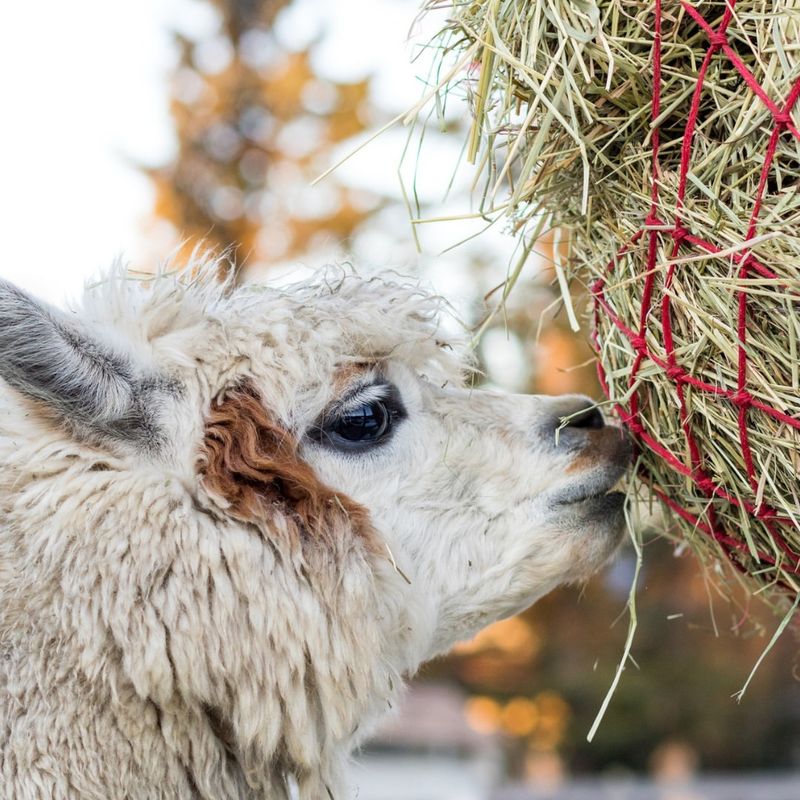
These animals have a remarkably low environmental impact compared to other livestock, making them an eco-friendly farming choice. Their padded feet cause minimal damage to the landscape, unlike hooved animals that can compact and erode soil. This gentle touch helps maintain healthy pastures and prevents overgrazing, preserving the ecosystem.
Additionally, alpacas efficiently convert grass and forage into energy, requiring less feed than similarly sized livestock. Their efficient digestive system reduces methane emissions, contributing to a lower carbon footprint. In areas where sustainability is a priority, alpacas present a viable solution for reducing farm-related environmental damage.
Their fleece also plays a role in environmental sustainability. Naturally grown and biodegradable, alpaca fiber offers an alternative to synthetic materials, reducing pollution and waste. As more consumers seek eco-friendly products, alpacas stand as a symbol of sustainable farming practices. Their harmonious relationship with the environment ensures that they support biodiversity while providing valuable resources.
6. Varied Vocalizations
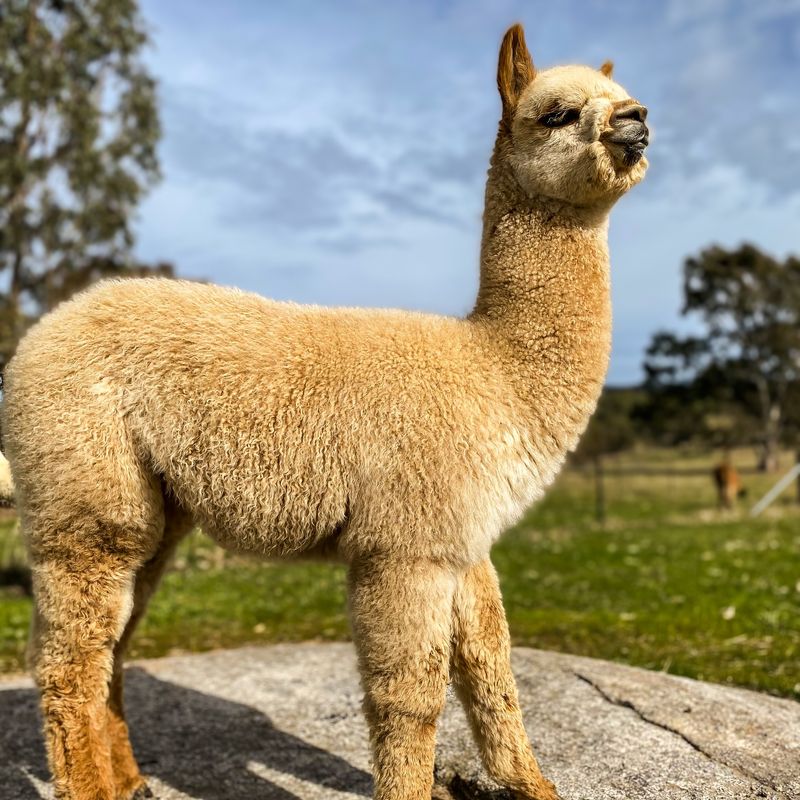
Alpacas are not only social creatures but also highly communicative, using a variety of vocalizations to express themselves. The most common sound they make is a gentle hum, used to convey contentment or curiosity. This soothing hum is a staple of alpaca interaction, often heard when they are calm and relaxed.
In addition to humming, alpacas may make clucking or clicking noises to alert the herd to potential dangers. These sounds serve as a warning system, ensuring that the group stays aware of its surroundings. Alpacas may also emit a shrill scream if they feel threatened, a rare but intense vocalization that demands immediate attention.
Mother alpacas use a unique sound known as “orgling” during mating season, a distinctive noise that plays a role in their reproductive behaviors. Each of these vocalizations plays a crucial role in the alpaca’s social structure, enhancing their ability to communicate and maintain herd cohesion.
7. Adaptation To Altitude
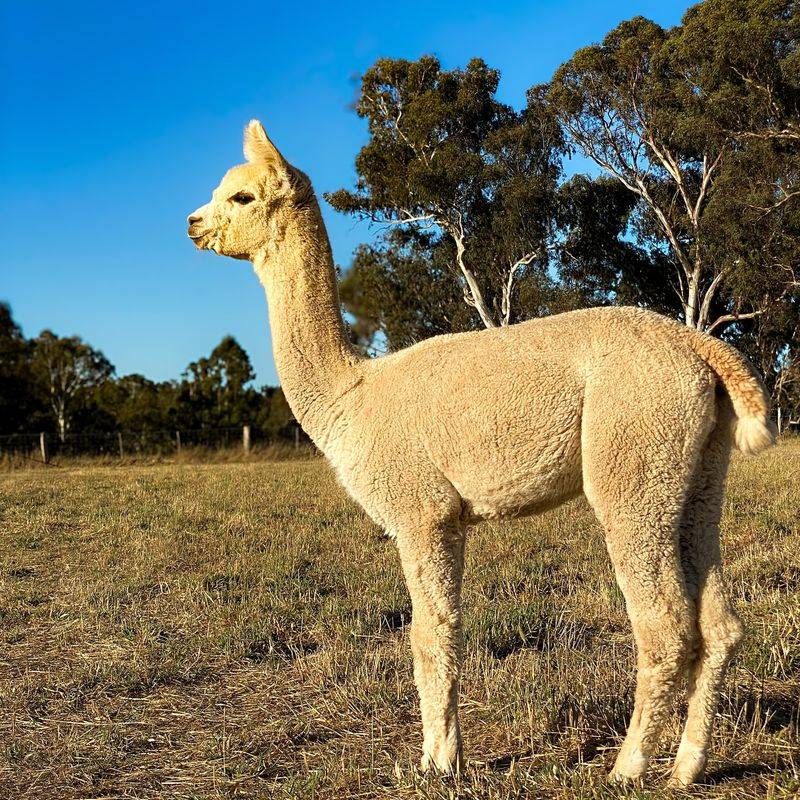
Alpacas are native to the high-altitude regions of the Andes Mountains, a challenging environment that has shaped their unique adaptations. They are well-suited to life at elevations ranging from 11,000 to 16,000 feet, where the air is thin, and temperatures can fluctuate dramatically.
One of the key adaptations of alpacas is their ability to thrive in low-oxygen conditions. Their blood has a high concentration of hemoglobin, allowing them to efficiently transport oxygen throughout their bodies. This physiological trait enables them to remain active and healthy even in the rarefied atmosphere of the Andes.
Their dense fleece provides insulation against the cold, while their efficient metabolism ensures they can survive on sparse vegetation. These adaptations make alpacas resilient creatures, capable of enduring the harsh conditions of their native habitat. Their ability to adapt to high altitudes has also made them popular livestock in other mountainous regions around the world, where they continue to thrive.
8. Alpaca Herd Dynamics
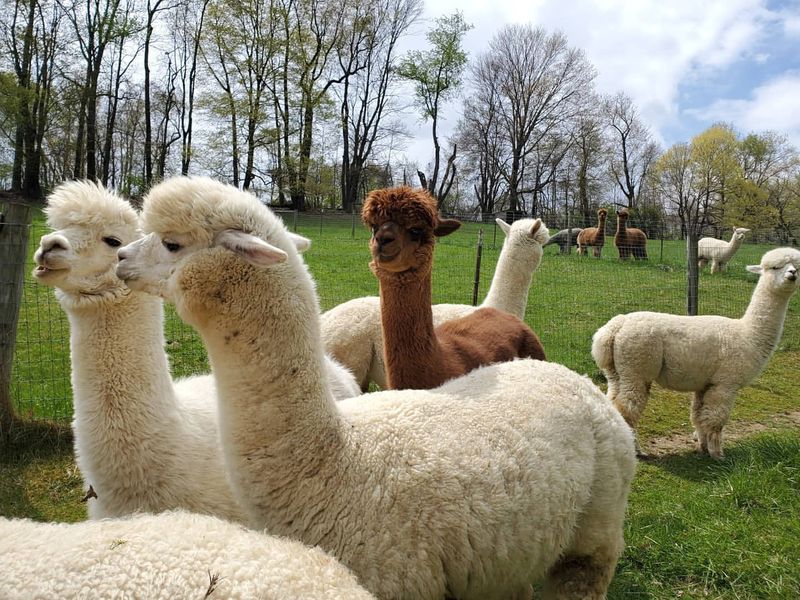
Alpaca herds are structured around a complex social hierarchy that influences their daily interactions and behaviors. This hierarchy is not rigid but rather fluid, with positions shifting based on age, gender, and personality traits. Typically, an older or more dominant male will lead the herd, guiding them to grazing areas and acting as a sentinel.
Females and younger alpacas generally follow the lead of the dominant male, though they may establish their hierarchies within the group. Social bonds are reinforced through communal grazing, dust bathing, and resting together, creating a cohesive unit.
Herd dynamics also play a role in reproductive activities, with males competing for the attention of females during the breeding season. These interactions are usually non-aggressive, relying on vocalizations and posturing rather than physical altercations.
9. Alpaca Wool Industry
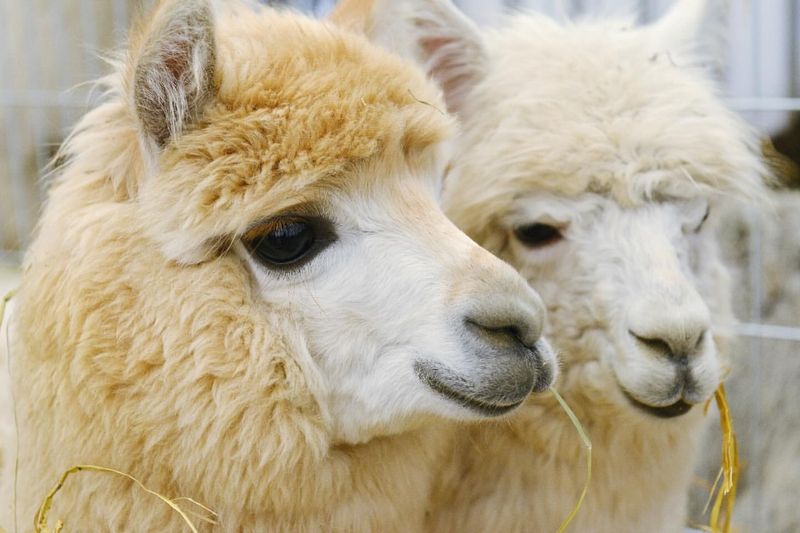
The alpaca wool industry has a rich history, dating back thousands of years to the ancient civilizations of South America. Known for its luxurious texture and warmth, alpaca wool has been a coveted material for textile production. Today, it continues to be a staple in the fashion and home goods industries.
Artisans in countries like Peru and Bolivia have perfected the art of spinning and weaving alpaca wool, creating a wide range of products from clothing to blankets. These traditional techniques are passed down through generations, preserving the cultural heritage and craftsmanship associated with alpaca fiber.
The global demand for alpaca wool has expanded, with eco-conscious consumers seeking sustainable and ethically sourced materials. Alpaca wool’s hypoallergenic properties, combined with its light weight and warmth, make it an attractive alternative to synthetic fibers.
The growing alpaca wool industry not only supports traditional livelihoods but also promotes environmental sustainability, as alpacas provide a renewable and biodegradable resource.
10. Alpaca Colors And Markings
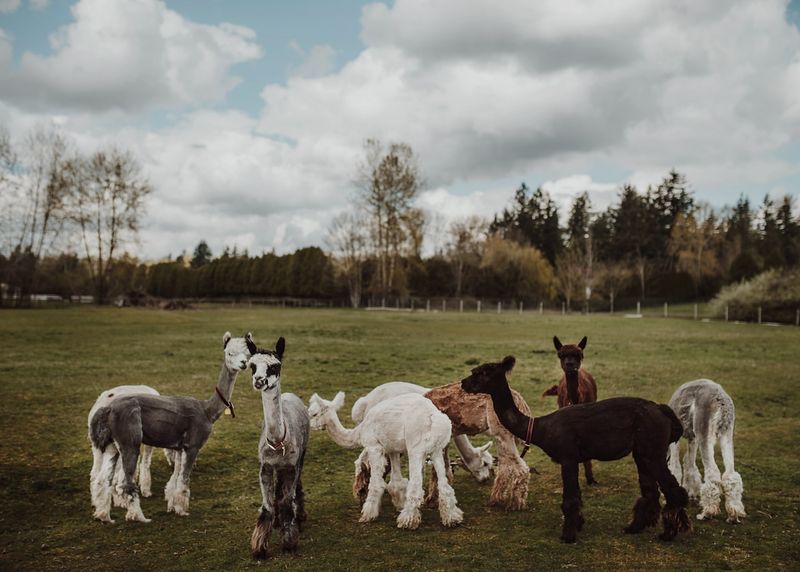
Their stunning array of natural colors and markings makes each animal unique. These colors range from pure white to deep black, with a variety of browns, grays, and fawns in between. This natural diversity in color is one of the reasons alpaca fleece is so highly valued by artisans and textile producers.
The color of an alpaca’s fleece is determined by its genetics, with some breeders specializing in producing specific shades. Markings can also appear, such as facial spots or leg bands, adding to the individual character of each alpaca. These unique patterns make alpacas not only a source of valuable fiber but also a visually appealing addition to any farm.
This natural coloration requires no dyeing, preserving the purity of the fiber and reducing the environmental impact associated with textile production.
The variety of colors available allows designers to create beautiful, natural palettes without artificial intervention, highlighting the versatility and beauty of alpaca fleece.
11. Alpacas And Llamas
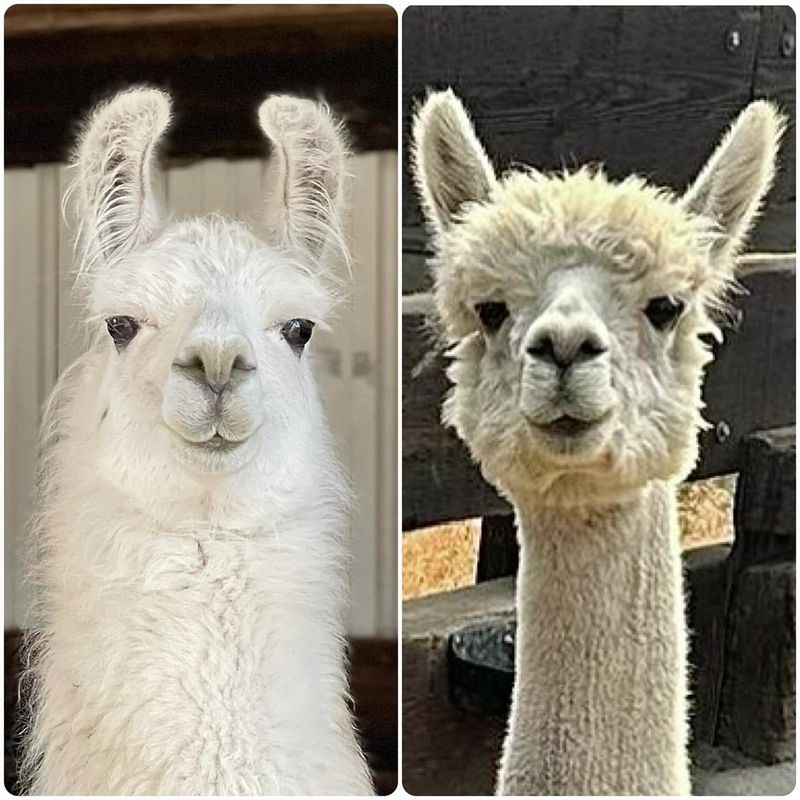
Alpacas and llamas, both members of the camelid family, are often confused due to their similar appearances. However, they have distinct differences that set them apart. Alpacas are smaller, with a more delicate frame and shorter ears compared to the larger, more robust llamas.
The primary purpose of these animals also differs. Alpacas are primarily raised for their luxurious fleece, while llamas are often used as pack animals due to their strength and endurance. This distinction has influenced their respective breeding and development over time.
Despite these differences, alpacas and llamas share a common ancestry and can interbreed, producing hybrids known as “huarizos.” These hybrids often inherit traits from both parents, resulting in unique appearances and characteristics.
12. Alpaca Diet
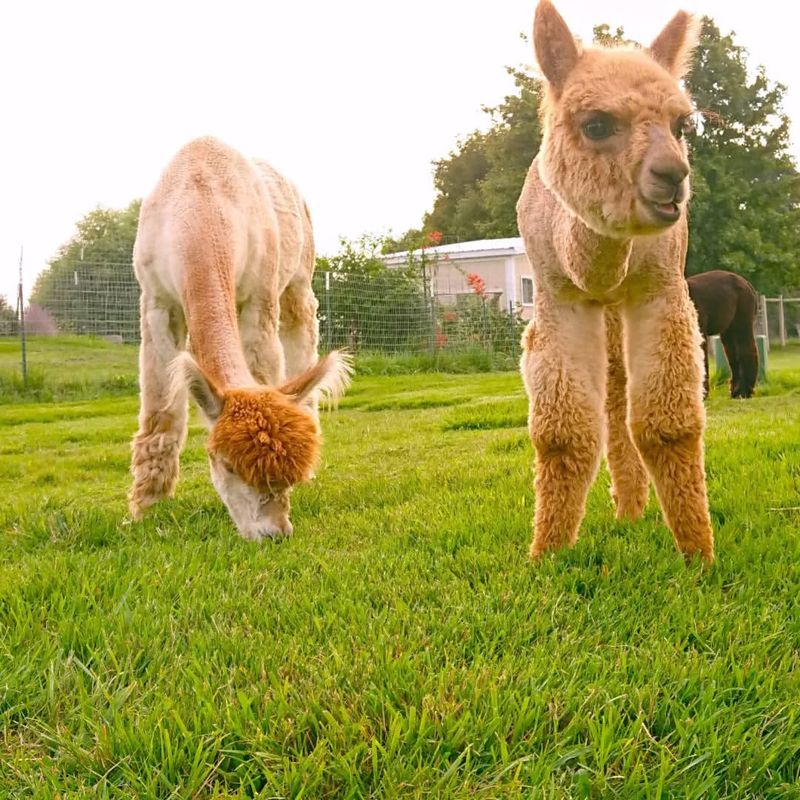
Their unique digestive system allows them to efficiently break down fibrous materials, extracting the maximum nutritional value from their food. This efficient digestion makes alpacas well-suited to thrive in a variety of environments, including the sparse pastures of their native Andes.
In addition to grazing, alpacas may also consume hay as a supplement, especially in regions where natural forage is limited. Farmers often provide mineral supplements to ensure alpacas receive all the necessary nutrients for optimal health. The availability of clean, fresh water is also essential, as hydration plays a crucial role in overall well-being.
Alpacas’ ability to maintain good health on a relatively simple diet makes them attractive to farmers seeking sustainable livestock options. Their grazing habits can even benefit pasture management, as they help control weed growth and contribute to pasture health.
13. Alpaca Reproduction
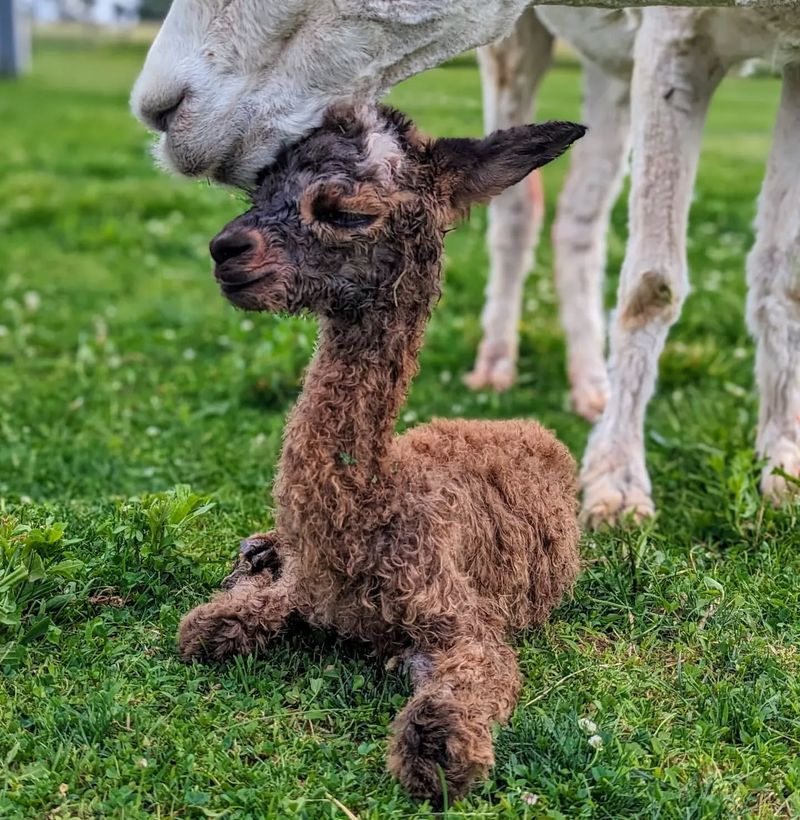
Alpaca reproduction is a fascinating process characterized by unique behaviors and biological traits. Female alpacas, known as hembras, are induced ovulators, meaning they ovulate in response to mating rather than on a regular cycle. This adaptation allows for flexible breeding and increases the chances of successful conception.
Gestation lasts approximately 11.5 months, resulting in the birth of a single cria, though twins are rare. Newborn crias are precocial, meaning they are relatively mature and mobile shortly after birth. This independence is crucial for survival in the challenging environments of their native habitats.
Mother alpacas are attentive and nurturing, fostering strong bonds with their young. They provide ample milk for growth and development, with weaning occurring around six months of age. Understanding the nuances of alpaca reproduction helps breeders optimize herd management and ensure the health and vitality of both mothers and offspring. The reproductive traits of alpacas highlight their adaptability and resilience as a species.
14. Alpaca Lifespan
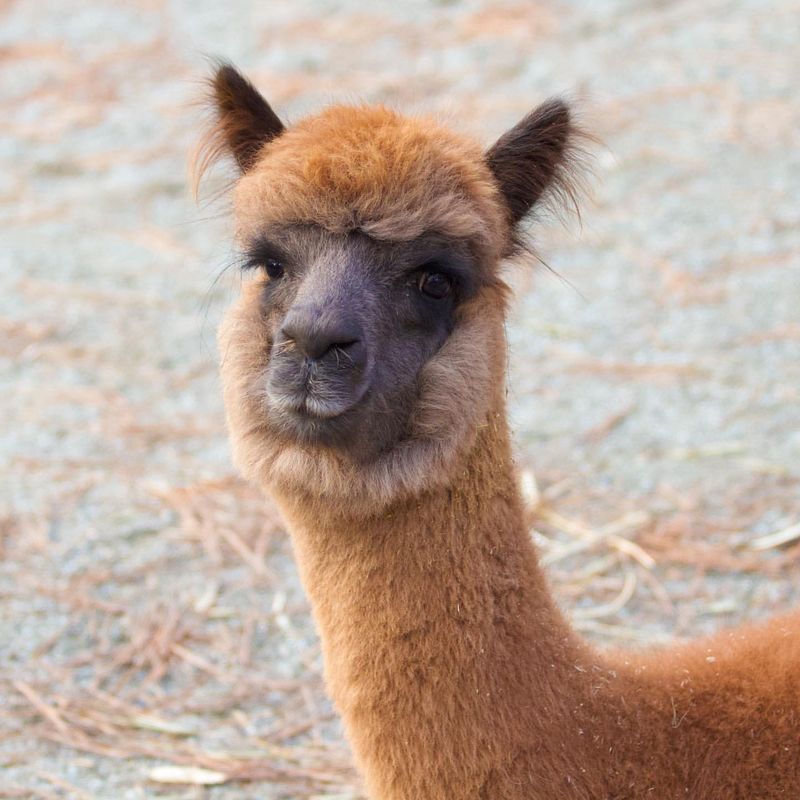
Typically living between 15 to 20 years, alpacas have a relatively long lifespan for livestock. This longevity makes them a valuable investment for breeders and farmers. The life of an alpaca can be divided into several key stages, each with its own characteristics and requirements.
Newborn alpacas, known as crias, are highly dependent on their mothers for the first months of life. As they grow, they gradually become more independent, learning to graze and interact with the herd. By the time they reach one year of age, alpacas are fully weaned and integrated into the herd dynamics.
Adult alpacas continue to grow and develop until they reach maturity at around three to five years of age. During this time, they may become involved in breeding activities, contributing to the continuation of the herd.
Understanding the lifespan and developmental stages of alpacas helps breeders and caretakers provide appropriate care and management, ensuring their health and well-being throughout their lives.
15. Alpaca Health And Wellness
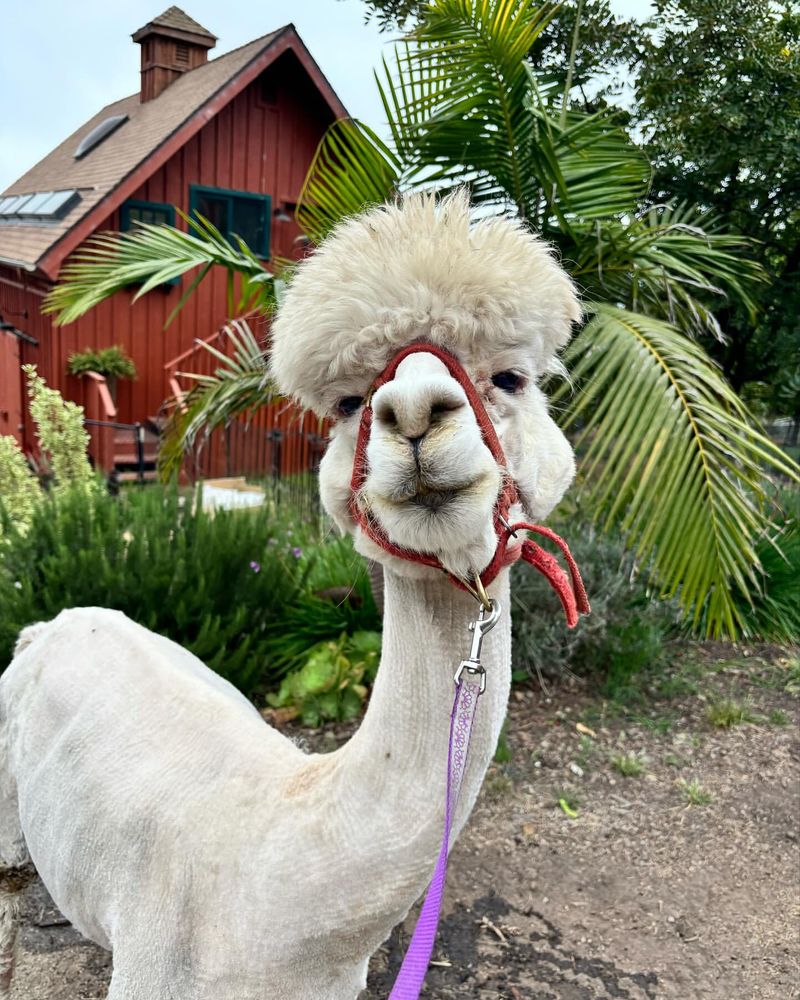
Maintaining the health and wellness of alpacas is crucial for their productivity and quality of life. Regular veterinary care is essential, including vaccinations, deworming, and health screenings. These preventive measures help protect alpacas from common diseases and parasites, ensuring their well-being.
Alpacas require routine grooming to keep their fleece in optimal condition. This includes regular shearing, typically done once a year, to prevent overheating and maintain fleece quality. Nail trimming and dental care are also important aspects of alpaca husbandry, contributing to their overall health.
Beyond physical health, alpacas benefit from mental stimulation and social interactions. Providing a stimulating environment with ample space to roam and graze helps prevent stress and boredom. Understanding the comprehensive health needs of alpacas supports their longevity and enhances their quality of life, making them a rewarding addition to farms and homesteads.
16. Alpaca Shearing
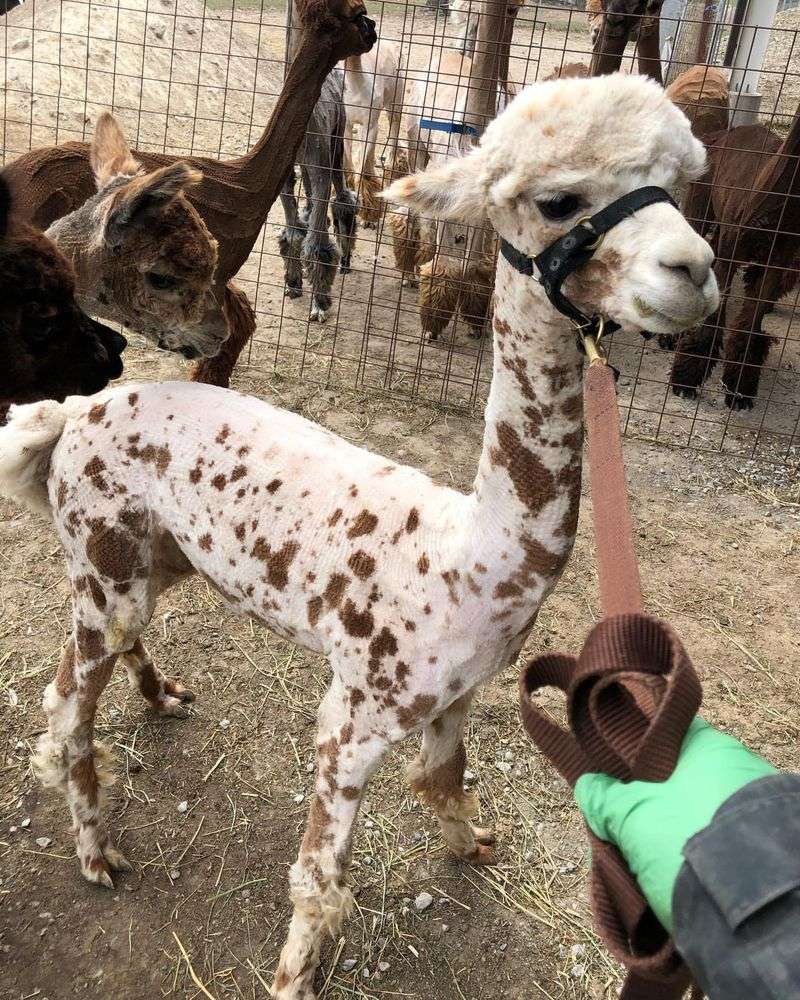
Shearing is an essential part of alpaca care, performed annually to harvest their valuable fleece and maintain the animals’ health. This process usually takes place in the spring, allowing alpacas to shed their winter coats before the warmer months. Proper shearing techniques are crucial to ensure the comfort and well-being of the alpacas.
During shearing, skilled handlers carefully remove the fleece from each alpaca, taking care to avoid cuts or injuries. The fleece is removed in a single piece, preserving its quality and making it easier to process. This process not only provides valuable fiber but also helps prevent heat stress, as alpacas can become overheated if left with their thick fleece in the summer.
Shearing also offers an opportunity for a thorough health check, allowing farmers to inspect the alpacas for any signs of illness or injury. This annual routine is a vital part of responsible alpaca husbandry, ensuring that the animals remain healthy and comfortable throughout the year. Understanding the importance of shearing highlights the commitment to alpaca welfare and the production of high-quality fleece.
17. Alpaca Guardianship
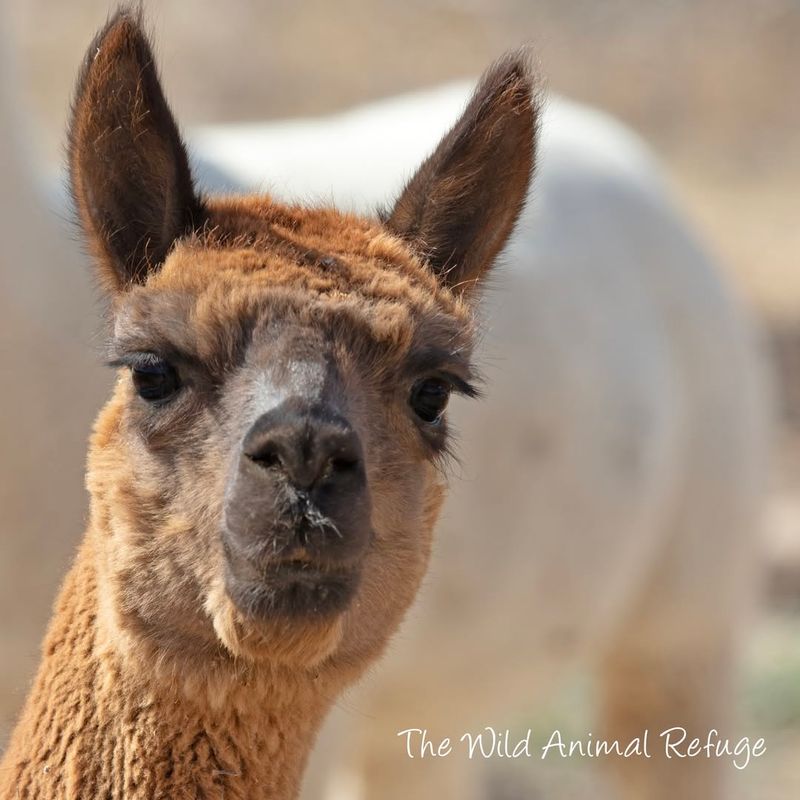
Alpacas are not only valued for their fleece but also for their ability to serve as guardian animals for smaller livestock. Their alert nature and protective instincts make them effective guardians against predators such as foxes and coyotes. This role is particularly beneficial for farmers raising sheep or goats, who may be vulnerable to such threats.
When integrated into a mixed-species herd, alpacas quickly establish themselves as vigilant protectors. They use their keen senses to detect potential dangers and will vocalize or physically confront intruders if necessary. This protective behavior helps ensure the safety of the herd, reducing losses and providing peace of mind for farmers.
Alpacas’ natural guardianship abilities, combined with their gentle disposition, make them an ideal choice for farmers seeking non-lethal predator control methods. Their presence deters predators without the need for fences or other barriers, supporting a harmonious coexistence with local wildlife.
18. Alpaca Training
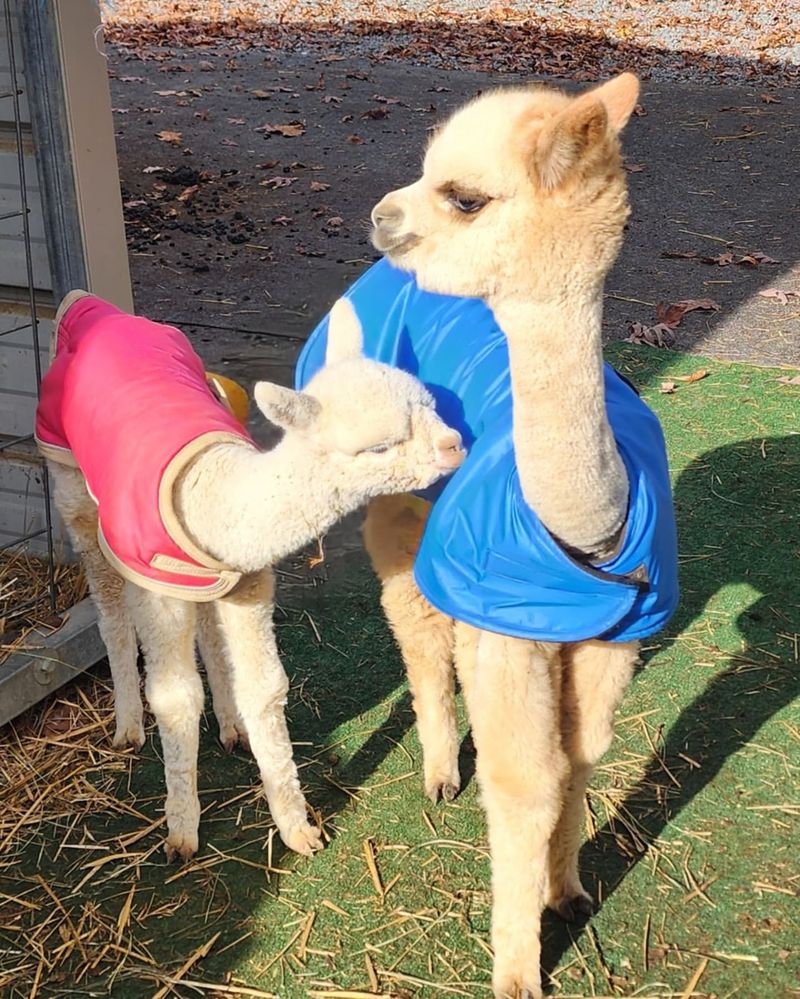
Training alpacas involves patience and positive reinforcement, focusing on building trust and cooperation between the animal and handler. While alpacas are generally gentle and curious, training helps them become accustomed to handling and routine care activities such as shearing and veterinary visits.
Handlers use various techniques to acclimate alpacas to human interaction, starting with simple tasks like leading and haltering. Positive reinforcement, such as treats or praise, encourages alpacas to engage willingly and reduces stress during handling.
Training sessions are kept short and consistent, allowing alpacas to learn at their own pace. This approach not only enhances their cooperation but also strengthens the bond between alpacas and their caregivers.
Understanding alpaca training techniques is essential for successful husbandry, ensuring the well-being of both the animals and their handlers. This gentle approach to training supports the overall health and happiness of alpacas, making them well-rounded companions and productive members of the farm.
19. Alpaca Shows And Competitions
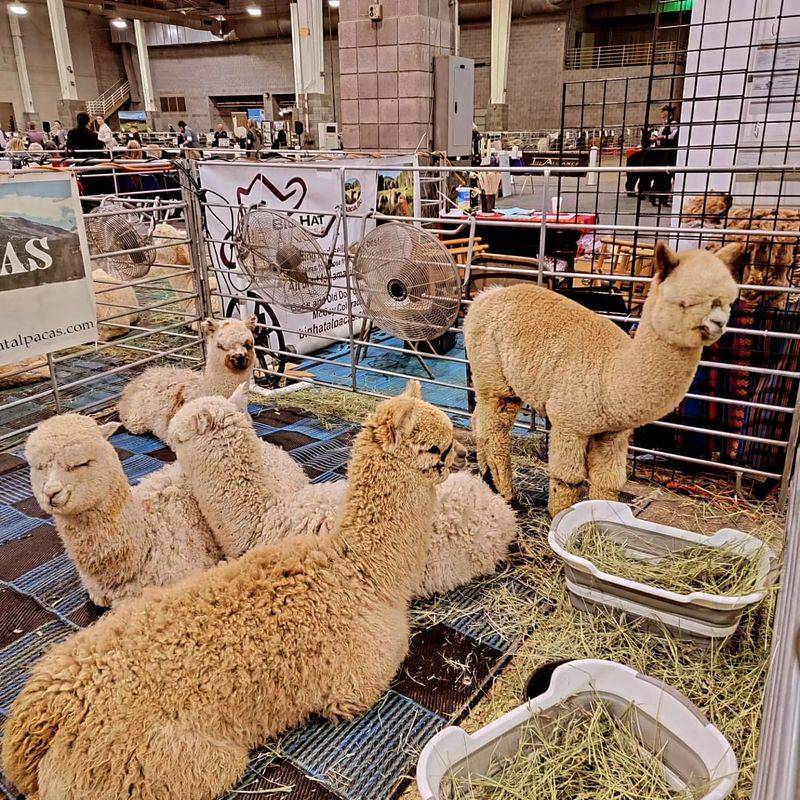
Alpaca shows and competitions provide an opportunity for breeders to showcase their animals’ qualities and compete for recognition. These events celebrate the beauty and diversity of alpacas, with categories based on fleece quality, color, and conformation.
Judges evaluate alpacas based on specific criteria, including the fineness and density of their fleece, their overall health, and their physical structure. Winning at these shows is a prestigious achievement, reflecting the breeder’s dedication to maintaining high standards in their herd.
Participating in alpaca shows also fosters a sense of community among breeders, providing opportunities for networking and knowledge sharing. These events highlight the commitment to excellence within the alpaca industry, encouraging continuous improvement and innovation.
20. Alpaca Tourism
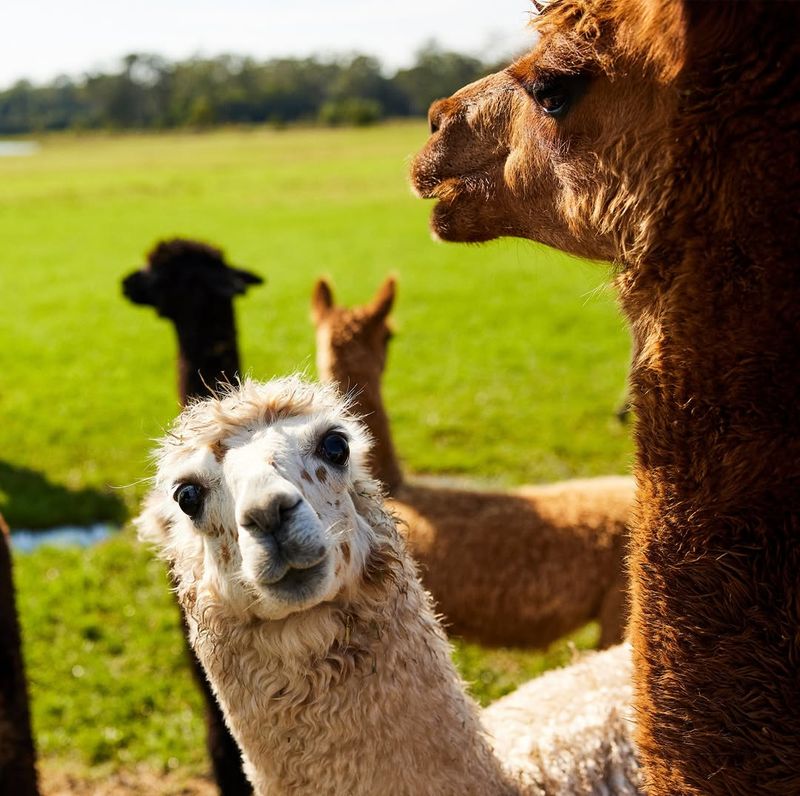
Alpaca tourism has gained popularity in recent years, offering visitors a chance to interact with these charming animals in a farm setting. Many alpaca farms have opened their doors to the public, providing tours, educational experiences, and opportunities to purchase alpaca products.
Visitors can learn about alpaca husbandry, fleece production, and the history of these fascinating animals. Guided tours often include close encounters with alpacas, allowing guests to feed and pet them while learning about their unique characteristics.
Alpaca tourism supports local economies and raises awareness about sustainable farming practices. It also fosters appreciation for the cultural and environmental significance of alpacas, bridging the gap between rural and urban communities.
Understanding the impact of alpaca tourism highlights its role in promoting environmental education and providing memorable experiences for people of all ages.

